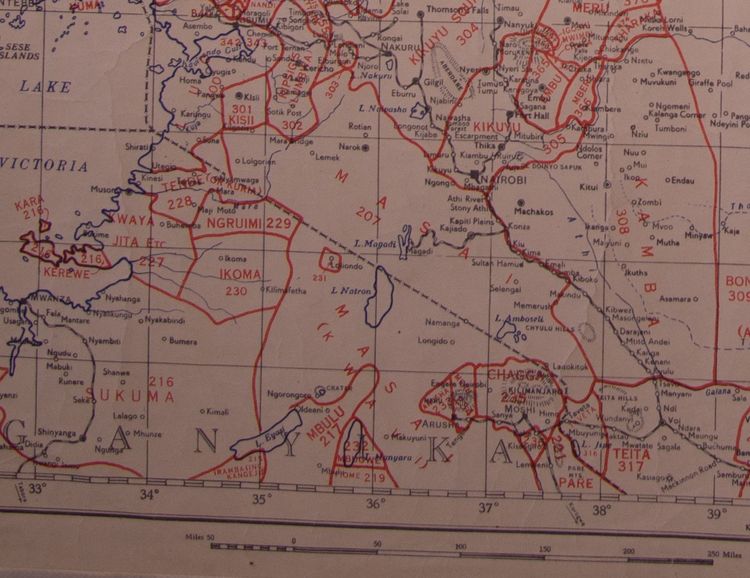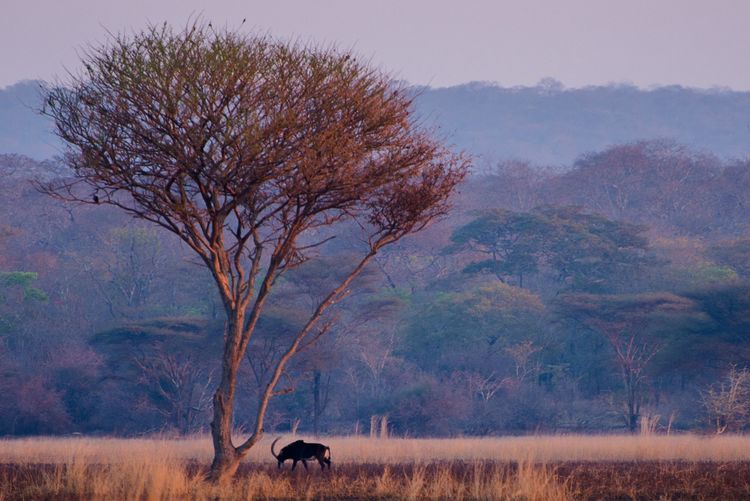Turning the Tide Against Poaching: Lessons from Tanzania

Originally published on November 17, 2016 in thecourant.org

The global scale of the ongoing elephant poaching crisis is immense. The most recent evidence shows that in the last seven years, an estimated 144,000 African elephants were illegally killed for their ivory. In the six years up to November 2014, Tanzania lost by far the most, with the second largest population of elephants in the world collapsing from 109,000 in 2009 to 43,000. On average, one elephant was killed every 45 minutes in Tanzania alone. Poachers and traders were being arrested but few were convicted, with most granted bail to return to poaching or trading. Sentences were weak, fines were low. There was little deterrence and the massacres continued.

In order to address the problem, conservation NGOs grew in size with many starting major donor-funded projects in protected areas to improve monitoring, build anti-poaching capacity and equip rangers. Furthermore, many stakeholder forums, workshops and large awareness campaigns were conducted both locally and internationally. This significant growth in investment did not come cheap and budgets routinely ran into the tens of millions of dollars.
Did investment manage to turn the tide?
Unfortunately scaling up conventional approaches to conservation has, in most instances, had limited success. The most dramatic collapse in wildlife populations due to poaching occurred in protected areas where the largest elephant populations existed, even though these were the areas which received the greatest conservation funding. As early as 2012 the writing was on the wall in Tanzania as its African elephant population crashed to 69,000. Money flowed in by the millions to address the problem, yet the killing continued. Two years later, the number had dropped further to 43,000. The situation got worse, even with all the financial support and international attention. Conventional approaches and aid funding alone were not effective at addressing the problem.
So if this approach wasn’t working, what was needed?
The solution to address the poaching problem lies in the source countries, and using the correct strategy. The PAMS Foundation found that we could not simply be defensive in our approach; simply defending protected areas from poachers does not work. If this is an “ivory war”, then a well informed and fully integrated multi-agency approach is the most appropriate and successful way to take on those involved in illegal wildlife crimes and expect to be able to win. In practise, the successful strategy has three main pillars:
Defence. Where the poaching is taking place in protected areas or on community land, it is the honourable task of the rangers and scouts to form the last line of defence. They can achieve this effectively provided they are properly equipped and trained to perform ground based patrols, aerial support and surveillance. They prevent the loss of wildlife by being able to effectively apprehend potential suspects.
Attack. In order to defeat the threat to elephant survival, we cannot rely on defence alone though. The battle needs to be taken to the senior officers and generals of the organised crime gangs who are primarily in the major towns and cities. These are the people who finance poaching, seek out markets, and bribe government officials. They do all this whilst sleeping safely in the comfort of their own beds at night far from the front lines, all the while making a fortune from this illegal trade. Attacking ring-leaders is done through intelligence-led operations targeting buyers and high-level traders in urban areas, followed by thorough and professional legal case preparation and prosecution. Well-trained experts from the police, intelligence and state prosecution, with a clear mandate and access to all the necessary resources, are integral to this task. This approach takes the emphasis off a shoot to kill policy that attacks poor people in desperate situations and re-focuses the strategy on those that are profiting most from the illegal trade.

Midfield. Neither Defence nor Attack will be effective without communities on their side however; those right in the middle of this ground war. Much of the intelligence, raw information and support required to succeed comes from communities involved in conservation. We must work with communities to gain their trust and achieve their support for our efforts. This support can be achieved through effective projects implemented together with communities in areas neighbouring protected areas, or in community lands with wildlife. Successful projects might include: supporting income-generating activities for the communities; working with farmers or pastoralists to prevent and mitigate human-wildlife conflict, ensuring that local livelihoods are not negatively impacted by conservation efforts; or supporting community-led projects that they believe to be of importance. Solutions that respect and make partners of local communities through opportunities and incentives to value and conserve wildlife can, and will, provide a long term solution to the illegal wildlife trade.
The tidal wave of poaching in Tanzania has turned over the last year and a half
We expect that future government elephant population censuses will officially verify that the national decline in elephants has slowed by over two thirds since 2015, compared with the annual averages of the preceding six years. This slow-down is not simply due to a lack of elephants, as large herds of elephants remain in the Selous, Ruaha, Tarangire and Serengeti. The slow-down is principally because of the aforementioned strategy, effectively employed throughout Tanzania. These achievements do not come easy and they have been achieved through the extreme dedication and hard work of numerous people and agencies, both nationally and internationally. To single out a few results produced from the multi-agency National and Transnational Serious Crimes Investigations Unit (NTSCIU) since 2014, one can see some internationally unparalleled achievements:
- 1,306 poachers and illegal ivory traders arrested, of which over 250 were in Dar Es Salaam and other major cities, demonstrating that the war has been taken to the ring-leaders in the cities;
- Over 350 firearms and 40 vehicles used in ivory poaching have been confiscated;
- Four of the biggest ever illegal ivory traders have been arrested, including Yang Feng Glan the notorious Queen of Ivory, and Boniface Matthew Mariango, also known as “The Devil”;
- 84% of those that have reached trial have been convicted, with the rest either in custody and awaiting trial or turned state’s witness;
- 51 offenders have been given prison sentences of 16 years or more – some as much as 40 years.
All of these significant results were achieved with a budget of less than US$3 million to date, where other people have talked of tens of millions of dollars to achieve less meaningful results.

Potential for a future with elephants
There is still a long way to go before we can say that the illegal ivory trade has been dismantled in Tanzania. However, these achievements demonstrate Tanzania’s commitment to completely dismantling the trade at a national level. Under Tanzania’s current president and the leadership of the Ministry of Natural Resources and Tourism, as well as the Ministry of Home Affairs and others, it is likely that the ground-breaking programmes and multi-faceted strategy in place to save the nation’s elephants should continue to be a shining example to the rest of the world. Other countries are now implementing this three-pronged approach and we believe that many others would benefit immensely from doing so.

Kill the demand
Of course the story doesn’t end there. To achieve a complete victory against the illegal trade in ivory, the world must curtail the demand. To play their part, countries in the Far East – particularly China – must show their commitment. Thousands of ivory customers must stop buying ivory. The international ivory trade ban, “The Convention on the International Trade in Endangered Species of Wild Fauna and Flora” (CITES), has been in place since the mid-70s but it wasn’t until a ban on ivory was agreed in 1990 that we saw a considerable drop in poaching after a catastrophic decade. However in 2008, CITES approved a legal sell-off of ivory stock piles – China was one of the approved purchasers – which some attribute as the principal reason for driving demand that resulted in the massive spike in elephant killing in recent years. Crucially for markets still selling ivory, CITES also agreed to revise Resolution 10.10 recommending that countries with domestic ivory markets take legislative, regulatory and enforcement measures to close such markets, with a call to other governments, NGOs and donors to help with funding and technical expertise. This should provide all the incentive required to kill the markets, and the demand.
If both source and destination countries play their part, wild elephants will have a future. Tanzania is playing its part, it’s up to others now to do theirs.
*The Tanzanian NTSCIU mentioned above features in the new Netflix documentary, The Ivory Game. Watch the trailer below:
For more information about PAMS Foundation, visit http://pamsfoundationtanzania.org/ and https://www.facebook.com/PAMSFoundation/





